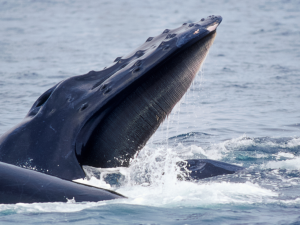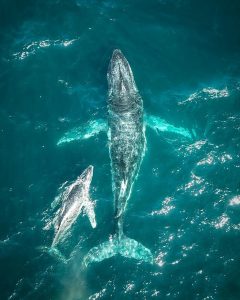Mapping the home waters of manatees, polar bears and the critically endangered North Atlantic right whales and Rice’s whales
New Candidate Important Marine Mammal Areas (cIMMAs) were announced in May 2024 with names like True’s Beaked Whale Aggregation Area, Terminos Lagoon and St. Vincent-Bequia Channel “Rat Porpoise” Alley.
In all, following an intensive week at the 11th regional Important Marine Mammal Area (IMMA) workshop in the Yucatán, 46 new cIMMA proposals were discussed, prepared and submitted to the IMMA Secretariat of the IUCN Marine Mammal Protected Areas Task Force. Over the next few months, they will be independently reviewed and considered for full IMMA status.

The North West Atlantic Ocean and Wider Caribbean, which represents more than a quarter of the Atlantic Ocean from the tip of southern Labrador to Venezuela, features substantial populations of both feeding and breeding humpback whales, endangered blue whales and vulnerable sperm whales. There are Risso’s, Fraser’s, and common bottlenose dolphins, dwarf sperm whales living in “rat porpoise” alley, and many species of deep-diving beaked whales. Several species reside mainly in this region including the critically endangered North Atlantic right whale. The recently identified Rice’s whale is found only in the Gulf of Mexico and now has its first candidate IMMA in proposal.
The IMMA Secretariat has also accepted the first cIMMA proposal for polar bears, harp and hooded seals. This is the Southern Labrador Pack Ice Whelping Area cIMMA.
Participants of the workshop consisted of 57 scientists and observers from 14 countries (38 in the room, 19 online) who are specialists in whales, dolphins, porpoises, seals and manatees in the waters of the North West Atlantic and Wider Caribbean, from Canada in the north to Venezuela in the southern Caribbean, and including Bermuda.

The final decision on the new cIMMAs qualifying as IMMAs is expected later in the year, and then they will join the 280 existing IMMAs from the South Pacific, Southern Ocean, Indian Ocean, the Southwest and Northeast Atlantic, as well as the Mediterranean, Black and Caspian Seas. Every IMMA can be viewed on the Task Force’s IMMA e-Atlas where they can be downloaded as shapefiles and associated information.
IMMAs are defined as discrete portions of habitat, important to marine mammal species, that have the potential to be delineated and managed for conservation. IMMAs are identified in order to prioritise their consideration for conservation measures by governments, intergovernmental organisations, conservation groups, industry and the general public.
The group started with 235 preliminary areas of interest (pAoI), assembled from existing MPAs, Biologically Important Areas (BIAs) identified in US waters, and Convention on Biological Diversity ecologically or biologically significant areas (CBD EBSAs), plus 57 submitted by marine mammal experts, each of which had to be examined in detail before being considered for a cIMMA proposal. Besides the 46 new candidate IMMAs, 7 areas of interest (AoI) were also singled out by the experts as being useful to highlight for future work and potential cIMMA identification if more research is conducted.









